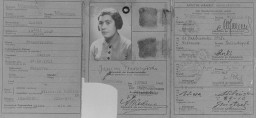You searched for: poland
<< Previous | Displaying results 426-450 of 1579 for "poland" | Next >>
-
Kazimiera Banach Justynowa
ID CardKazimiera was born to Roman Catholic parents in the town of Mierzen. After graduating from a teacher's college in Staniatki, she married Wincenty Justyna, a secondary school teacher. The couple settled in the small industrial city of Piotrkow Trybunalski and raised three children, Jerzy (a boy), Danuta and Maria. Kazimiera worked as a school teacher. 1933-39: With their combined incomes the Justynas were able to buy a plot of land and build a house. The Germans invaded Poland on September 1, 1939, and…
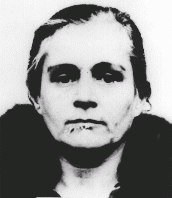
-
Welek Luksenburg
ID CardWelek grew up in Dabrowa Gornicza, an industrial town in western Poland. His father, Simcha, was a wholesale meat merchant and his mother, Rozalia, served as president of the local chapter of the Women's International Zionist Organization. Welek's older brother, Szlomo, was a dentist. The Luksenburgs were among the several thousand Jews who lived in Dabrowa Gornicza. 1933–39: Like many other children in the town, Welek attended public school. Because his family was very religious, he did not attend…

-
David Bayer
ID CardDavid was the second of four children born to religious Jewish parents in Kozienice, a town in southeastern Poland. His father, Manes, owned a shoe factory that supplied stores throughout the country. His mother, Sarah, took care of the home and children, and helped in the factory. Kozienice had a thriving Jewish community that constituted over half of the town's population. 1933–39: For most of the 1930s, David spent his days going to school, playing sports, and working in his father's shoe factory.…

-
Elzbieta Lusthaus
ID CardElzbieta grew up in Iwonicz, a resort town in southwestern Poland noted for its mineral water. Her father, Edmund, was a respected physician and Helena, her mother, had studied pharmacology. At home, they spoke Polish and were among the few Jewish families who lived in Iwonicz. 1933–39: When German troops invaded Poland on September 1, 1939, Elzbieta's father was drafted into the Polish army. Seventeen days later, the Soviet army drove in from the east and Edmund was captured. He was transported to a…
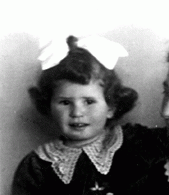
-
Isak Saleschutz
ID CardIsak was one of seven children born to devout Hasidic Jewish parents living in Dubas. By 1900, all of his siblings had immigrated to America; Isak remained in Poland due to his strong religious convictions. Through an arranged marriage, he was wed to Ester Berl when he was 18. They settled in Kolbuszowa, a small town near Dubas, where Isak ran a successful wholesale general store. 1933-39: On September 9, 1939, the German army occupied Dubas. They hanged two Jews to demonstrate the consequences of not…
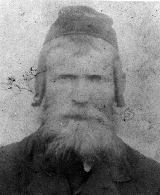
-
Aron Tabrys
ID CardAron was the second of six children born to Jewish parents in Vilna, a city known as a center of Jewish cultural life. He was called Arke by his friends and family. Aron's father supported his large family on the meager income of a chimney sweep. 1933-39: As a child Aron attended a Jewish day school, and then went on to attend a public secondary school. When he was 14 his father had an accident which rendered him blind, and Aron had to start working full-time to support the family. Aron belonged to an…

-
Lisa Dawidowicz
ID CardLisa was born to a Jewish family in the small city of Ostrog in southeastern Poland. Her parents operated a grocery out of their residence; the front half of the house was a store and the rear half was their home. Ostrog was an important center of Jewish religious learning in Poland, and by 1933 Jews made up almost two-thirds of the city's total population. 1933-39: Lisa's family was religious and they regularly attended services. Lisa studied at a Polish school until the Soviets arrived in September…

-
Gerda Weissmann
ID CardGerda was born to a Jewish middle-class family in Bielsko, Poland, a town noted for its textile industry. She began her education in Polish public school, but later entered a Catholic girls school. A rabbi was permitted to come into the school and instruct the Jewish students in religious studies. 1933-39: On Friday, September 1, 1939, German fighter planes appeared overhead, causing many people to flee the city. Gerda's family remained and lived through the intense shelling that followed on Sunday…
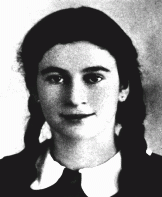
-
Max Rosenblat
ID CardMax's parents, Taube and Itzik, first met as children in 1925. Taube was the daughter of a tailor who hired apprentices in his shop, and Itzik was one such apprentice. The Jewish youngsters fell in love and dreamed of getting married even though Taube's family frowned upon the match. 1933-39: In 1938 Taube and Itzik married. The couple lived in an apartment on 49 Zeromskiego Street in Radom, where Itzik opened a women's tailor shop. Max was born in July 1939. He had curly hair and blue eyes like his…
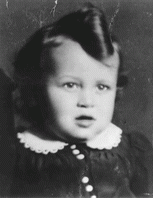
-
Jozef Wilk
ID CardJozef was the youngest of three children born to Roman Catholic parents in the town of Rzeszow in southern Poland. Jozef's father was a career officer in the Polish army. Jozef excelled in sports, and his favorite sport was gymnastics. He also studied the piano. 1933-39: Jozef was 14 when Germany attacked Poland on September 1, 1939. The invasion affected him deeply. Brought up in a patriotic family, he had been taught to love and defend Poland. The Germans were bombing Warsaw, the Polish capital, but…
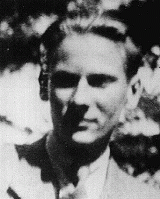
-
Josef Litwak
ID CardThe son of Moses and Sarah Litwak, Josef was born in Dolina, a town in southeastern Poland. Josef came from a religious Jewish family. When he was in his early twenties, he married Mina Schaerf from the nearby town of Vinnitsa just across the Polish border. The couple settled in the industrial city of Lvov, where Josef worked in the family-owned bank. Josef and Mina raised five children. 1933-39: The Litwaks' two youngest children, Fryda and Adela, had finished secondary school and were planning to attend…
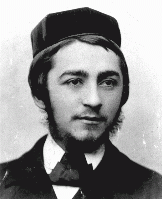
-
Chuna Grynbaum
ID CardChuna was born in a small one-story house that served as both his family's residence and their tailor shop. He was the youngest of nine children born to religious Jewish parents. The family's tailor shop mostly served Starachowice's Catholic Poles. The work was often done in exchange for goods such as firewood or a sack of potatoes. 1933-39: Chuna's father died unexpectedly in June 1939. After returning from synagogue one day, his father lay down to rest. He asked Chuna to close the shade to darken the…

-
Tomasz (Toivi) Blatt
ID CardTomasz was born to a Jewish family in Izbica, a Polish town whose largely religious Jewish community comprised more than 90 percent of the population. Tomasz's father owned a liquor store. 1933-39: In September 1939, a drum sounded in the marketplace, calling the town to assemble for a news report. Germany had invaded Poland. More news arrived shortly; the Soviet Union was invading from the east. Tomasz and his family didn't know what to do. Some people said to run to the Soviet side; many, including his…

-
Eugeniusz Rozenblum: Maps
Media EssayEugeniusz Rozenblum was born to Jewish parents in Lodz, Poland. The Germans invaded Poland in September 1939 and in 1940 they forced the Jews of Lodz into a ghetto. In 1944, Eugeniusz was taken to Auschwitz and later to the Dachau camp. Out of the 7...
-
Large wooden crate used by Żegota to hide false documents
ArtifactThis large, lidded wooden chest was used by the Council for Aid to Jews (codenamed “Żegota”) to hide false identity documents from Nazi authorities. Żegota was an underground rescue organization of Poles and Jews in German-occupied Poland and operated from December 1942 to January 1945. Supported by the Polish government-in-exile, it coordinated efforts to save Jews in German-occupied Poland from Nazi persecution and murder. One of Żegota’s most impactful clandestine activities was producing and…
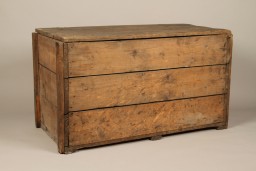
-
Jewish Councils
Media EssayThe Germans established Jewish Councils (Judenraete) in the ghettos during World War II. Jewish Councils were required to implement Nazi policies in the ghettos. This role meant impossible moral dilemmas. Council members had to decide wheth...
-
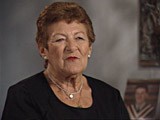
-

-
Eva Miodelska
ID CardEva was the oldest of four children born to a Jewish family in the central Polish town of Lipsko, about 30 miles southeast of Radom. The family lived at #12 Casimirska Street and Eva attended a private Jewish primary school. Eva's father owned a factory that produced shoes made from leather and cork. 1933-39: In the early 1930s Eva began secondary school in Zwolen, a town about 20 miles to the north. In 1936 her father left for Argentina to settle the estate of his deceased sister. For the two years he…
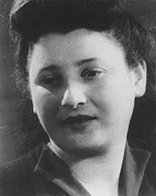
-
False identity for Żegota member Izabela Bieżuńska
DocumentDuring World War II, people often used false identities and forged identity documents to evade Nazi authorities. False identities were essential for resistance fighters, aid workers, and Jews hoping to pass as non-Jews. Creating high-quality, convincing forgeries required dozens of people to work together clandestinely. It also required sophisticated photography and printing equipment. For Jews passing as non-Jews, acquiring forged documents could mean the difference between life and death. This…
